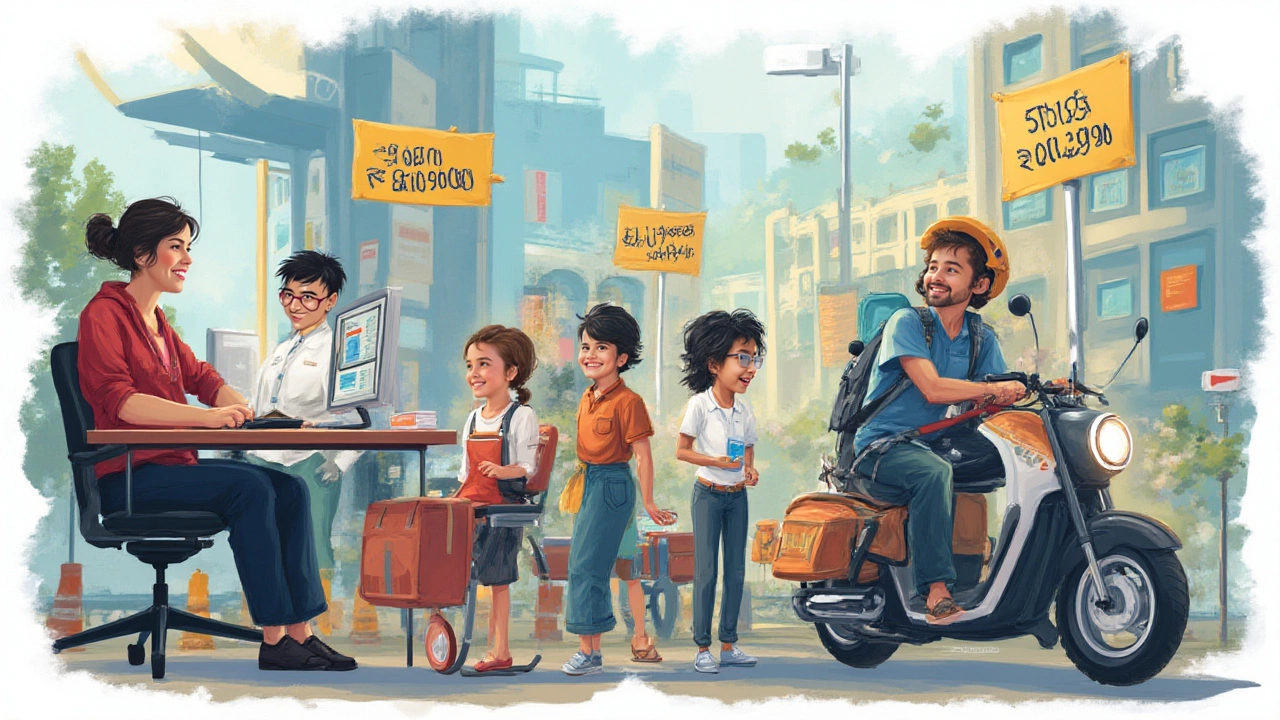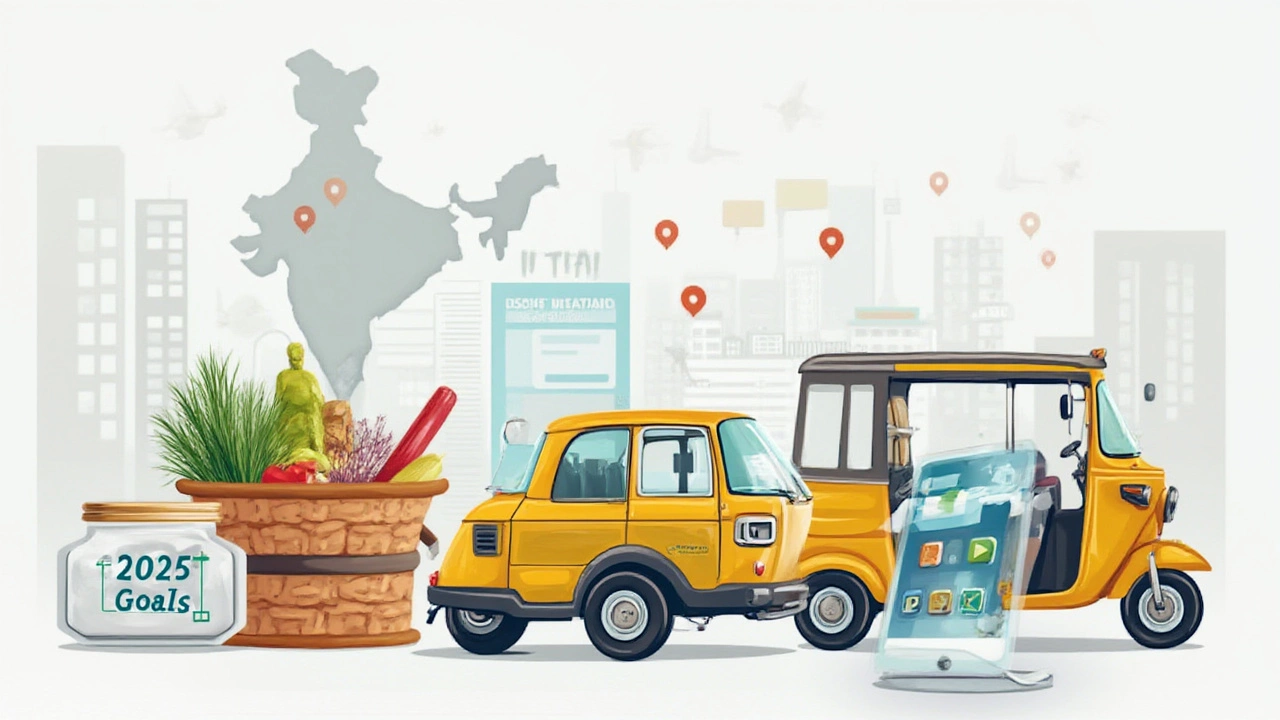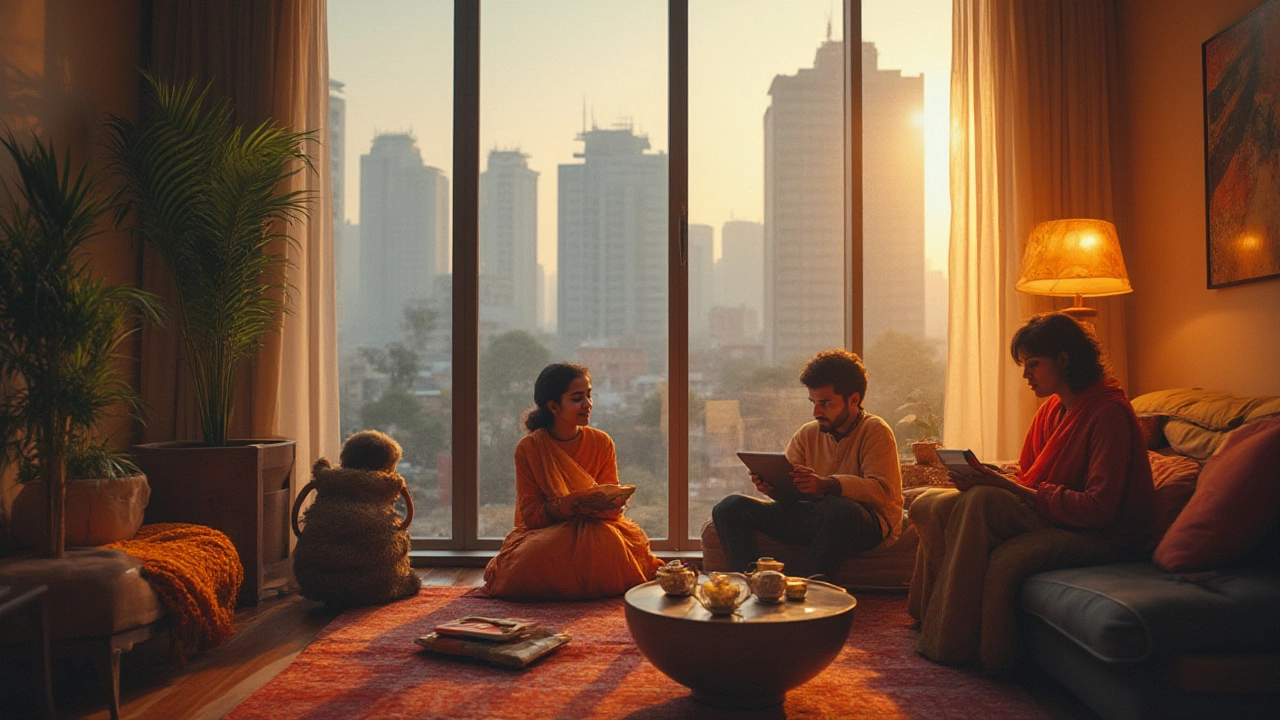What Is a Good Income in India? Realistic Numbers, Costs, and Lifestyles Explained
Ever wondered if your salary actually makes you 'well-off' in India? The gap between a dream income and real-life comfort can be wide. In a country where an iPhone can cost the same as a monthly paycheck (or more), it’s tricky to pin down just how much money counts as 'good'. Especially now, in July 2025, when salaries, rents, and daily expenses are shifting faster than ever. Some techies in Bengaluru stash away more in a month than school teachers earn in half a year. But while headlines flash massive numbers from unicorn startups, is that what most people really take home?
How Much Do Indians Actually Earn in 2025?
Start with the data: According to the 2025 India Labour Market Survey, the average monthly salary across all sectors hovers just under ₹35,000. That’s about ₹4.2 lakhs a year. But this figure gets thrown off by some big earners in metro cities—so what's average for your neighbor in Mumbai is totally different from someone in Patna. If you zoom in on urban India, middle-class workers in Delhi, Bengaluru, or Pune often see take-home pay between ₹50,000 and ₹1,00,000 per month. But more than half of working Indians earn less than ₹25,000 a month.
The real kicker? Less than 8% of Indians, according to the National Statistical Office, earned above ₹1 lakh per month as of late 2024. That one lakh figure is like a glass ceiling for most people. Let’s dig into specifics. Here’s a quick snapshot in a table:
| Job Role | Average Monthly Salary (₹) |
|---|---|
| IT Software Developer | 75,000 - 2,20,000 |
| Bank Branch Manager | 60,000 - 1,00,000 |
| School Teacher (Private) | 20,000 - 35,000 |
| BPO Executive | 18,000 - 40,000 |
| Government Clerk | 32,000 - 48,000 |
| Startup Founder (Median) | 110,000 - 350,000 |
It’s easy to see the sharp divide. A 25-year-old coder in a top company might pull ₹24 lakhs yearly, but her cousin back home scratch by on ₹3 lakhs as a shopkeeper. And the inflation bug bites everyone. Petrol now floats around ₹115 per litre, up from ₹87 just three years ago. A carton of milk climbed to ₹68, while rent for a standard 2BHK apartment in Bengaluru’s Koramangala won’t leave you much change from ₹55,000.

Cost of Living: Stretching Your Rupee in the Real World
Sure, ₹1 lakh a month sounds like a fortune, especially to college grads fresh in the job market. But how far does it actually go? Let’s break it down. Living in a tier-1 city like Mumbai, you’ll bleed ₹40,000 to ₹70,000 a month just for a decent flat in a safe area. Add bills, groceries, and commute, and you’re burning through at least ₹1,10,000 for a family of three who isn’t splurging. Eating out even thrice a week can hike your food budget by ₹8,000. That gym membership and Netflix subscription? Don’t forget another ₹4,000-5,000 in lifestyle costs. A quick look at the monthly spend:
- Rent for 2BHK in metro city: ₹55,000
- Monthly utilities (electricity, gas, internet): ₹6,000
- Groceries and essentials: ₹12,000
- Daily commute and fuel: ₹5,000
- School fees for one child (private): ₹7,000
- Eating out and entertainment: ₹7,000
- EMIs or savings: ₹10,000
Add it up—that’s ₹1,02,000. You’re already short if you wanted to save anything significant; can you imagine paying for a family vacation or covering an unexpected hospital bill out of that?
Now, compared to cities, small towns or semi-urban centers are an entirely different game. That same salary in Lucknow or Coimbatore can buy way more comfort. Landlords there might ask for just ₹12,000 for a spacious 2BHK, and a good school fee won’t punch a hole through your pocket. Eating out and transportation take smaller bites. For folks working remotely (pretty common these days), having a metropolitan salary while living in a tier-2 city means you’re stacking way more cash by month’s end. A 'good income' really depends on where you plant your roots.
And, get this: according to the RBI’s household savings report released in January 2025, the percentage of disposable income saved is down to 17%—lowest since 2012. Blame rising living costs, especially in healthcare and children’s education. Anyone earning above ₹70,000 a month enjoys some wiggle room, but even then, sudden expenses can throw budgets off.

What Counts as "Good Income" in India Right Now?
So what would most people actually call a 'good income' in 2025? It’s not just about the biggest paycheque or some magic number. The idea of 'good' shifts depending on your city, your responsibilities, and your goals. For single professionals or young couples starting out in metros, anything from ₹80,000 to ₹1,50,000 per month feels manageable—that’s enough to rent, have a few treats, and stash some cash away. If you’re supporting parents, kids, and running a household, the line jumps: ₹1,50,000 to ₹2,50,000 gives you real breathing room.
Middle-class families say they feel stable at ₹1.2 lakh per month in metros. They can afford weekend outings, private schools, okay medical cover, and festival gifts without sleepless nights. In smaller towns, a monthly income of ₹50,000 can put you into the top 10% of earners, based on current household income reports. A 2024 survey by Mint and YouGov found that 67% of mid-career professionals in tier-2 cities said earning over ₹60,000 a month felt “wealthy.” But remember, “good” is not just comfort—it's future-proofing, the ability to save for retirement, invest in property, or help family during emergencies.
If you’re aiming for bigger buffers, new opportunities are opening up. Sectors like fintech, healthcare tech, and data analytics are booming. In 2025, fintech product managers fetch up to ₹35 lakhs—a role nobody heard of ten years ago. Many gig workers patch together ₹60,000 or more by juggling freelance projects online. Higher skills mean higher pay, but even entry-level IT support can land you ₹28,000 monthly if you’re in a tech hub.
What if you want to climb faster? Here are some tips:
- Upskill—short courses in AI, cloud computing, or digital marketing pay for themselves fast right now.
- Ask for a raise—salary negotiation is less taboo than ever, especially for those with 3+ years at a firm.
- Pick the right city—look for companies that allow permanent WFH if you prefer a cheaper hometown lifestyle.
- Diversify income—side gigs, content creation, and online tutoring are hot in 2025.
- Use tax-saving investments smartly; don’t let tax eat away at your real income.
So, there’s no single number. That dream figure depends on what kind of life you want, where you live, and how you balance work and play. But if you’re hitting ₹80,000 in a big city or ₹45,000 in a small town, most folks around you would probably call that a good income. Just remember, the chase is never just for more zeros—it's about making life a little less stressful, and a lot more fun.





